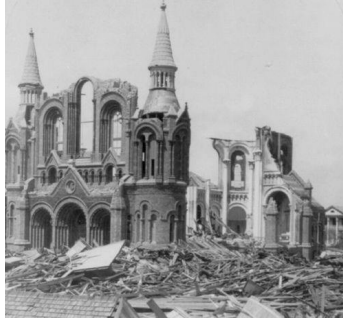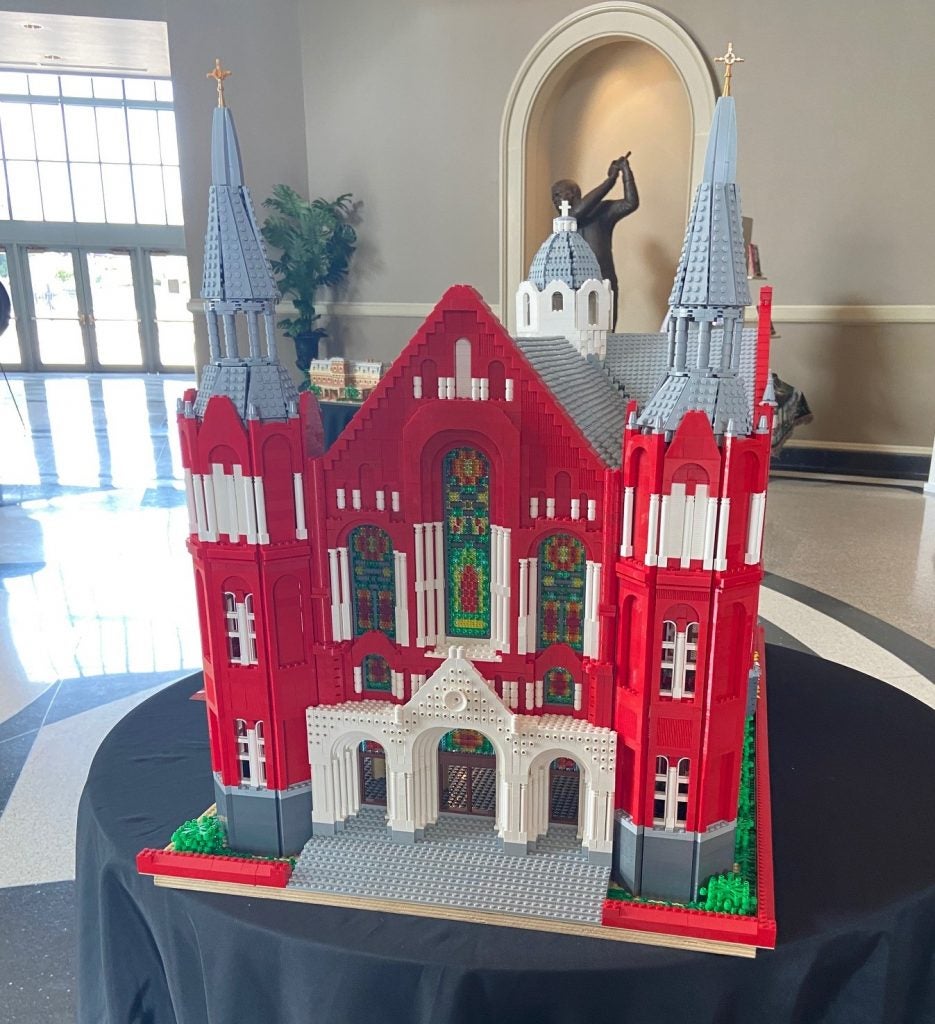Europe is well known for its towering, grand cathedrals that have survived the centuries, but North America has very few cathedrals, comparatively speaking, and one of those is situated right here in Augusta.
One of the main reasons there are few of the elaborate buildings with their naves, apses and flying buttresses is that many early American Catholics demurred from erecting ostentatious displays to their faith because their religion was viewed with suspicion by Protestants, who were in the majority.
MORE: Augusta early voting continues strong. View sample ballots here
According to the Pew Research Center, today there are an estimated 52 million practicing Catholics in America; however, in the early days of the republic, Catholics were viewed as allegiant to the Pope in Rome as opposed to the President in Washington.
As a result, few Catholics ran for public office, and most attempted to practice their faith “under the radar.”
In 1854, the same year that the Sacred Heart Parish was formed in Augusta, the Know-Nothing party was winning elections across the South by vilifying Catholics and foreigners.
According to the Catholic Labor Network, political cartoonist Thomas Nast loved to draw cartoons depicting Irish Catholics as barbaric, drunken layabouts who weren’t fit for citizenship. Meanwhile, the racist Ku Klux Klan lumped Catholics together with Blacks and Jews as being subhuman.
That suspicion would continue well into the 20th Century.
According to the John F. Kennedy Library, the future president had such opposition over his religion that the American Society of Newspaper Editors released a statement that ended with the question: “Are we going to admit to the world – worse still, are we going to admit to ourselves—that one-third of the American people is forever barred from the White House?”
However, in the 1850s, progressive Augusta was becoming home to a large contingent of both Irish and German immigrants, and they, as well as their religion, were largely treated with open arms.
The Catholic Bishop of Savannah knew that Augusta’s Catholic community had grown large enough for its own parish, and Sacred Heart was founded in 1854, making this year the 150 anniversary of its founding.
The first parish building was modest compared to what would come later, but building the parish was a community event. The father of Samuel Dennings, boyhood pal of future President Woodrow Wilson, supplied the bricks for the original building that still stands today.
But that is not the building you are likely thinking about.
By 1898, Sacred Heart Parish had grown in numbers and in wealth. It was decided that a grand cathedral would be built at the corner of Greene and 13th Streets.
Father Cornelius Otten, a priest as well as a talented architect was tapped to design and build the new church. From the looks of the building today, it was clear that Otten was given enough funding to let his imagination go wild.
Otten used his design for the earlier Sacred Heart Church in Galveston, Texas, but he improved on the original design and added even more architectural flair than his original.

Sacred Heart in Galveston was destroyed by a hurricane only months after Sacred Heart in Augusta was completed, but photos of the ruins show how similar the buildings were in design.
Otten chose a Victorian Romanesque style with a Byzantine influence for the new building, bringing Old World opulence to New World shores. In fact, according to Mountain Stewards, some of the building materials were actually shipped over from Europe, real Italian white marble was paired with the beautiful stained glass that came from Munich, Germany.
Sacred Heart would flourish as a church until the various Catholic societies in Augusta began to consolidate and the church was deemed somewhat outdated to modern sensibilities.
According to local historian Doug Herman, a bishop was brought in on July 4, 1971 to officially deconsecrate the old church and Sacred Heart Parish was no more.
The fact that the building is still standing today is actually somewhat of a miracle.
Augusta in the late 1960s and 1970s cared little about historic structures or architecture and many structures, such as the grand Union Station, were destroyed to make way for modern buildings or parking lots.
By the mid-1980s, the Sacred Heart building was decrepit and slated to become a parking lot when local philanthropist Peter Knox Jr. stepped in between it and the wrecking ball.
Herman writes: “’Mr. Pete’ adopted the Sacred Heart building in the early 1980s. As a result of his vision, financial commitment and family support, he personally directed a complete restoration of the building.”

Today, Sacred Heart Cultural Center serves the public in a different way as it is the host of weddings and other events. The beautiful twin spires can be seen from the Calhoun Expressway and all over downtown, a reminder of Augusta’s rich cultural history.
You might be wondering if the European practice of interring the bodies of church and community leaders inside the building was followed; according to Augusta Chief Judge Danny Craig, who was a member of the last Sacred Heart School graduating class, there are no catacombs or burials under the former church.
…And that is something you may not have known.
Scott Hudson is the Senior Investigative Reporter and Editorial Page Editor for The Augusta Press. Reach him at scott@theaugustapress.com












